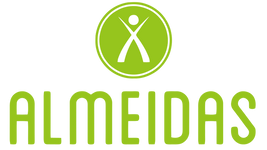
Positioning of the bed-ridden patient
What are the best positions for bedridden patients to adopt?

One of the biggest challenges for the caregiver of a bedridden patient is to ensure constant changes in positioning in bed, to effectively prevent pressure ulcers or bedsores.
Choosing a articulated bed and from one viscoelastic mattresses suitable for the patient are two of the factors that most quickly contribute to preventing the appearance of bedsores and making work easier for the caregiver.
It is also very important to change position every 3 hours, especially in very dependent elderly people. Below, we will address some of the most used positions in elderly care:
Supine


In this position, the person lies on their back with their head and shoulders slightly elevated.
Total or partial relief of pressure on the ankles is recommended, and it may also be necessary to relieve pressure on the elbows or head .
Right/left lateral decubitus


In this position the patient lies on their side at a degree of 30º, allowing two variations (left lateral decubitus and right lateral decubitus) .
This position protects the areas most at risk for the appearance of bedsores (the sacral area and the hip area), moving the weight to areas without bone protuberance and well vascularized.
The highest risk points in this position are the ear, knee and the outside of the ankle.
To promote the semi-lateral position you can use the semi-lateral positioning wedge or the unilateral positioner .
Semi-prone position 135º


The 135º lateral position is recommended for patients with ulcers in the sacral and dorsal areas. A complete relief of pressure in the affected areas contributes to tissue rejuvenation and vascularization.
Many patients find this position comfortable, as it relaxes the spine. This position can also facilitate the expulsion of fluids and secretions in the respiratory system.
To facilitate adoption of the position, an S-shaped cushion made of microballs can be used.
How to prevent pressure ulcers in bedridden patients?

The first step towards preventing pressure ulcers is identifying people at risk to plan the best strategy and prevent the appearance of wounds.
The skin should be assessed daily and frequently with special attention to areas close to bony protuberances , including the nape of the neck, shoulder blades, shoulders, elbows, sacral region and heels.
Depending on the patient's physical limitations, he or she should remain seated for at least 2 hours in the morning and 2 hours in the afternoon. If you are unable to sit during the day, move your arms and legs to activate circulation, especially in your extremities.
Ideally, you can change position every three hours. To do this, lift the patient instead of dragging him, as friction between the skin and the sheet can also cause pressure ulcers.
When he is lying down, encourage him to do stretching exercises. Moving your joints also prevents pressure ulcers and muscle stiffness. Encourage the patient to do as much as they can. Help when he can't do it alone.
The most commonly used support products to prevent pressure ulcers in bedridden patients are:
